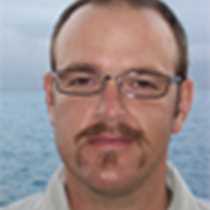Isabela Island
The day started with the sun showing itself in a clear sky with a cool breeze flowing over the ocean. We arrived to Urbina Bay with an invigorated mission, which was to explore.
Urbina Bay was uplifted violently in 1954 with just under two square kilometers being lifted out of the ocean over four meters leaving crustaceans, corals, invertebrates, and mangroves high and dry. The fierce volcanic history of this island continues to this day with various eruptions within the past few years. We make a wet landing and start a long hike along the coast eventually cutting inland to encounter large coral heads that were bleached by sun that they received out of the ocean. Some of this coral had hundreds of years of layers of growth before the uplift. The vegetation becomes dense as we search for and find land iguanas and a young tortoise.
Upon our return to our landing beach we are shown some indifference as we pass no less then sixty Darwin Finches feeding on the ground before us. The ocean held more surprises apart from the uplift as we entered the water. We are delighted with the sea lions, penguins, and stingrays that visit us in the calm water. Midday comes quickly and we head back to our home for the week, the National Geographic Islander.
Our Captain smoothly transports us to another planet or so it seems as we arrive to Punta Moreno on southern Isabela. Recent basalt flows show us that we are witnessing something new here on earth, an area that is to receive life and start its journey forward in time. We have options as we divide our expedition into hikers and Zodiac riders and the exploration continues.
Upon a mixed terrain of A’a and Pahoehoe lava flows we land and head inland coming upon various indentations in the lava flow that contain brackish water. This area is a complete oasis with lush vegetation and a food source for flamingos stopping over for a chance to feed before they continue their trajectory towards larger ponds. We find small pioneer plants trying their hardest to survive and colonize this basalt flow as we return to our landing site and a short Zodiac ride through the mangroves.
The Zodiac riders were enthralled with the amount of life found in shallows surrounded by large white and black mangroves. Pacific green sea turtles, penguins, golden rays, spotted eagle rays, and striated herons are upon us in this thicket. This afternoon was incredible and, as all have seen, it is virtually impossible to describe this with words.




